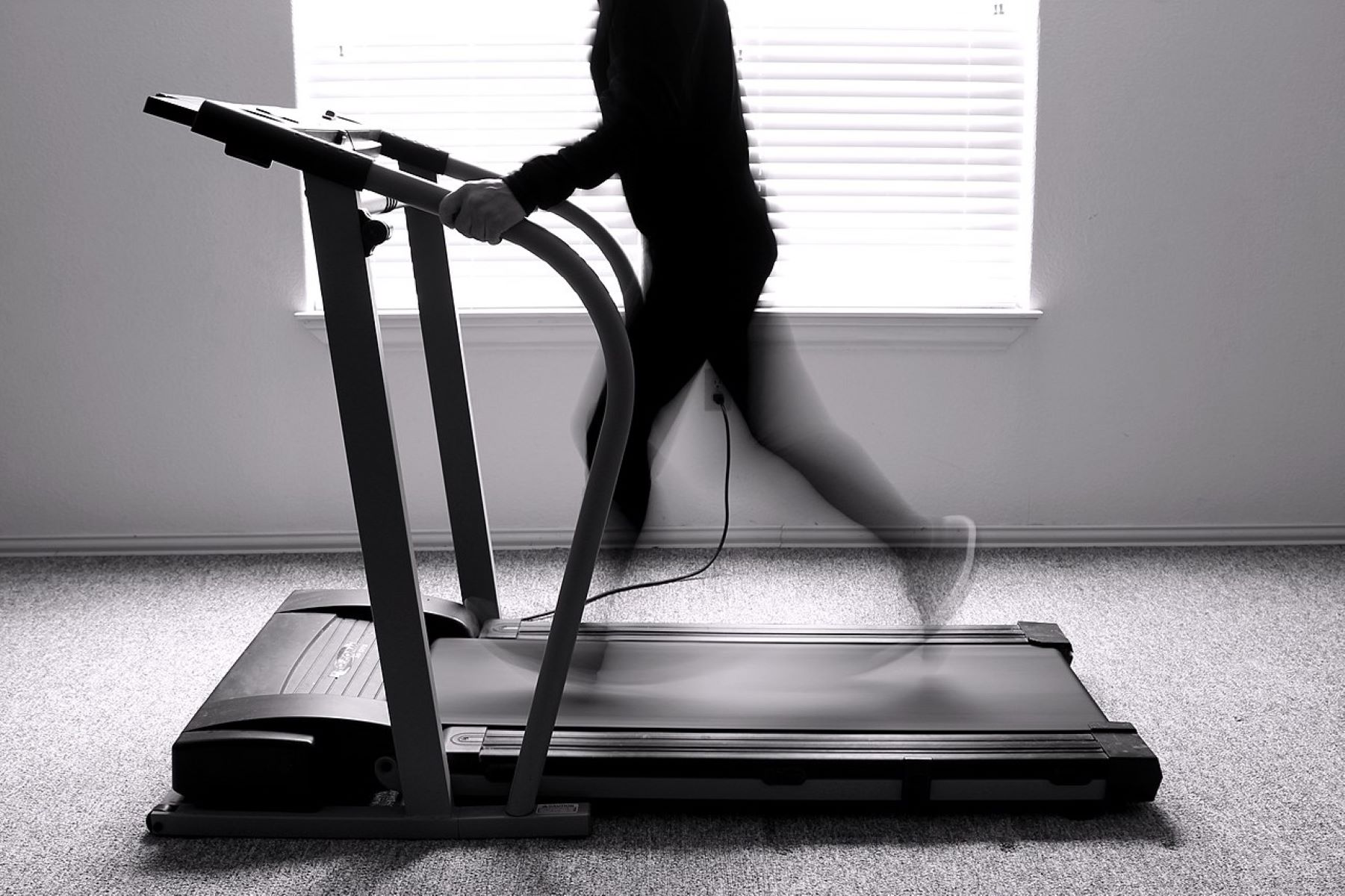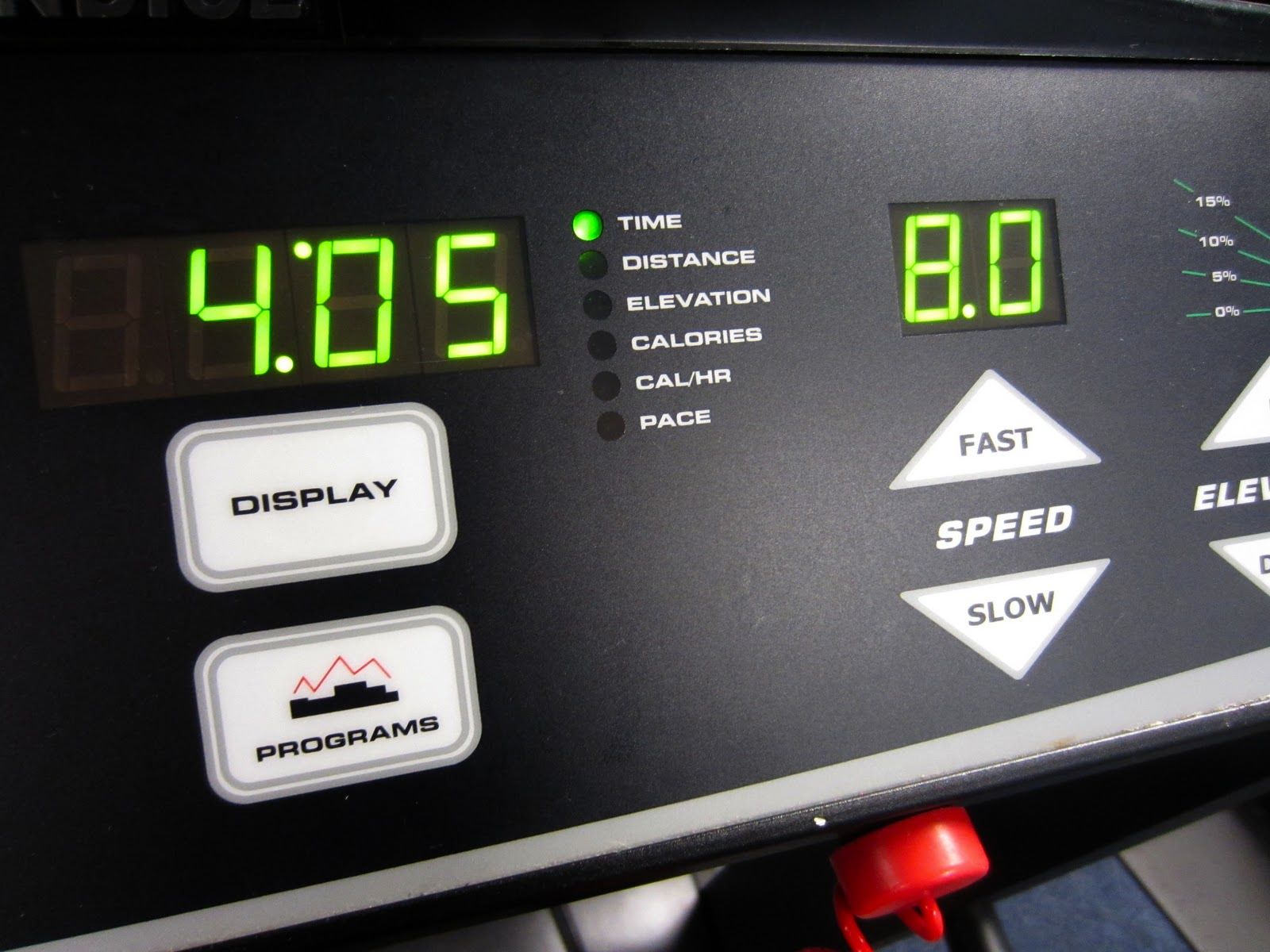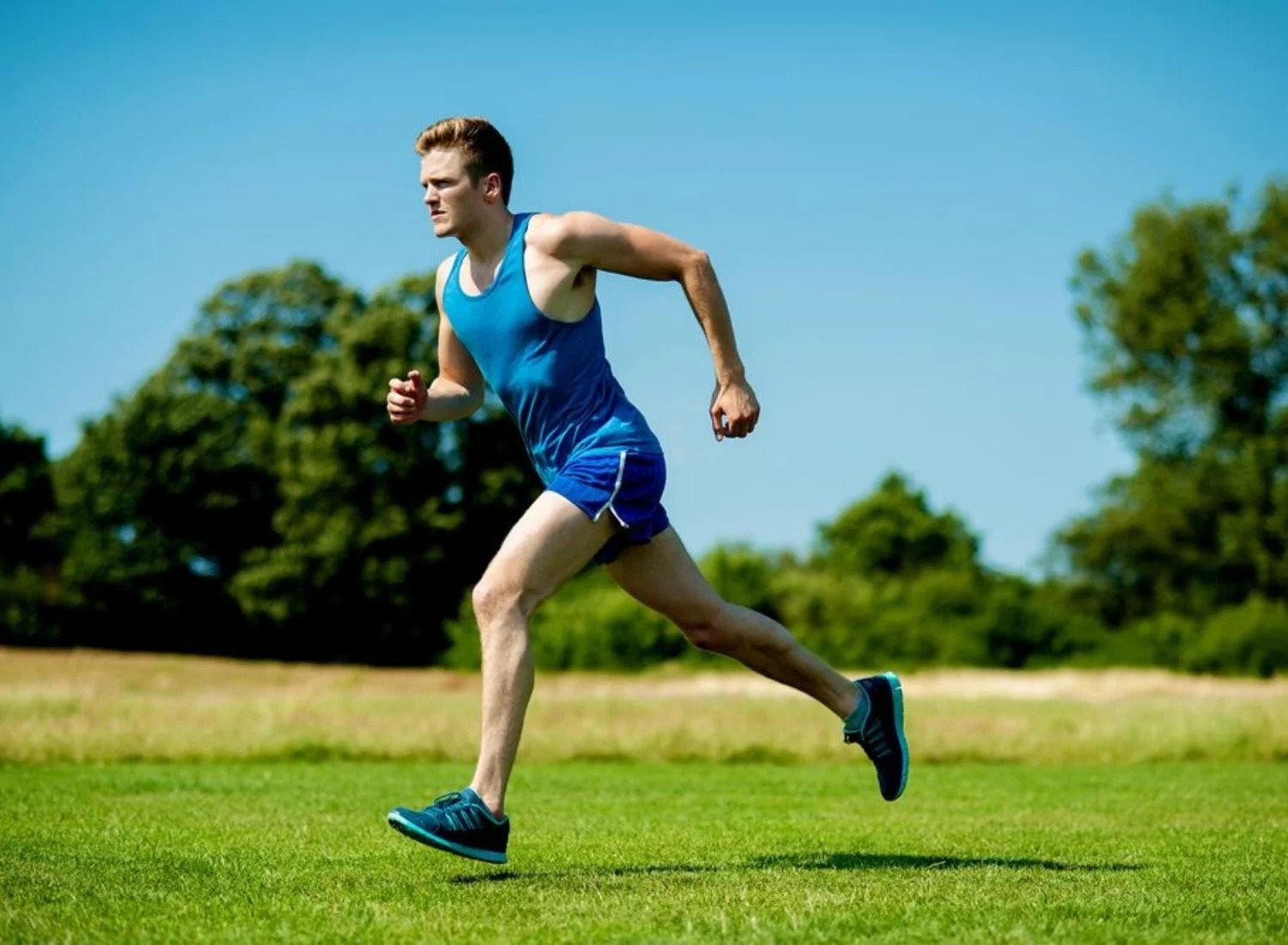

Featured
How Long Is 5 Miles Jogging
Modified: January 2, 2024
Discover how long it takes to jog 5 miles and get featured in our insightful guide. Find out the benefits of incorporating jogging into your fitness routine.
Introduction
Welcome to the world of jogging! Whether you’re a seasoned runner or just starting your fitness journey, understanding the distance covered while jogging is important. Many joggers want to know the specific length of their jogging route, whether it’s for tracking progress, setting goals, or simply satisfying their curiosity.
But how do we measure distance while jogging? Is there a standard unit of measurement? And more importantly, how long is 5 miles when jogging? In this article, we’ll delve into the concept of jogging distance, explore how 5 miles measures up, discuss the factors that can affect jogging distance, and offer some tips for accurately measuring distance during your jog.
Before diving into the details, let’s take a moment to acknowledge the popularity of jogging. It’s a form of exercise that can be enjoyed by people of all ages and fitness levels. Jogging offers numerous health benefits, such as improved cardiovascular health, increased endurance, stress reduction, and weight management. Plus, it’s a great way to enjoy the outdoors and connect with nature.
Now, let’s move on to understanding how distance is measured in the world of jogging.
The Concept of Jogging
Jogging is a form of aerobic exercise that involves running at a steady, moderate pace. It is a popular activity for both fitness enthusiasts and those looking to incorporate exercise into their daily routine. Unlike running, which is typically performed at a faster pace, jogging offers a more relaxed and sustainable form of physical activity.
One of the key features of jogging is its accessibility. You don’t need any specialized equipment or a fancy gym membership to go for a jog. All you need is a comfortable pair of shoes and a suitable location, whether it’s a park, a trail, or even your own neighborhood.
When it comes to measuring the distance of a jog, there are a few common units of measurement used. The most widely used unit is miles, especially in countries like the United States and the United Kingdom. Other countries may use kilometers as the standard unit of measurement.
It’s worth noting that jogging distance can vary from person to person. Factors such as fitness level, physical condition, and personal goals can all influence the distance covered during a jog. Beginners may start with shorter distances, gradually increasing their mileage as their endurance improves. Experienced joggers may aim for longer distances to challenge themselves and push their limits.
In addition to the physical aspect, jogging is also a mental and emotional activity. Many people find it to be a great way to clear their minds, reduce stress, and improve their overall well-being. It provides a sense of freedom and escape from the pressures of daily life.
Overall, jogging is a versatile and accessible form of exercise that offers a range of benefits for both the body and the mind. It’s no wonder that millions of people around the world lace up their running shoes and hit the pavement or trails to experience the joys of jogging.
Understanding Distance Measurements
Before we delve into how long 5 miles is when jogging, it’s important to have a clear understanding of how distance is measured. In the realm of jogging, there are two common units of measurement: miles and kilometers.
Miles: In countries like the United States and the United Kingdom, miles are the most commonly used unit for measuring distance. One mile is equivalent to 1.609 kilometers. Miles are often preferred by joggers who are more familiar with this unit of measurement.
Kilometers: In many parts of the world, including Europe and most of Asia, kilometers are the standard unit of measurement. One kilometer is equal to 0.621 miles. Kilometers are often used in organized races, fitness trackers, and mobile apps designed for joggers.
It’s important to note that these measurements are based on a straight line between two points. However, when you jog outdoors, your route may not be a straight line. It may include curves, bends, and turns, which can affect the actual distance covered. This is why it’s crucial to understand that distance measurements may not always be 100% accurate.
In addition to these units of measurement, there are also certain benchmarks commonly used in the world of jogging. These include:
- 5K (5 kilometers): This distance is equivalent to approximately 3.1 miles. It’s a popular choice for fun runs, charity races, and jogging events.
- 10K (10 kilometers): This distance equals approximately 6.2 miles. It’s a common goal for intermediate joggers looking to challenge themselves and improve their endurance.
- Half Marathon: A half marathon is 13.1 miles or approximately 21.1 kilometers. It’s a significant milestone for many joggers and is often a stepping stone to completing a full marathon.
- Marathon: The ultimate distance for many joggers, a marathon is 26.2 miles or approximately 42.2 kilometers. Training for and completing a marathon is a significant achievement that requires months of preparation and dedication.
By understanding these distance measurements and benchmarks, you can better track your progress, set goals, and gauge your performance in the world of jogging.
How Long is 5 Miles Jogging?
Now, let’s answer the burning question: How long is 5 miles when jogging? Well, 5 miles is equivalent to approximately 8 kilometers. This distance can vary depending on factors such as your jogging pace, terrain, and fitness level.
For an average jogger, it would take around 40 to 60 minutes to complete a 5-mile jog. However, keep in mind that everyone’s pace is different, so it’s essential to listen to your body and go at a speed that feels comfortable for you.
If you’re new to jogging or just getting back into it after a break, 5 miles might seem like a considerable distance. That’s perfectly normal! It’s okay to start with shorter distances and gradually build up your endurance and stamina over time.
On the other hand, if you’re an experienced runner or have been jogging regularly, 5 miles might be a part of your daily workout routine. Some joggers even go for longer distances, such as 10 miles or more, as they train for races or challenge themselves.
Remember, the most important thing is to listen to your body and progress at your own pace. Set realistic goals and gradually increase your distance as you become more comfortable and confident in your jogging abilities.
It’s also worth mentioning that the terrain you choose to jog on can influence how long it takes to cover a distance. Running on a flat surface, such as a track or a paved path, may allow you to maintain a consistent pace. However, jogging on hilly or uneven terrain might slow you down and require more effort.
Ultimately, the length of a 5-mile jog will vary based on individual factors and circumstances. So grab your running shoes, head out to your favorite jogging spot, and enjoy the journey as you conquer the 5-mile distance!
Factors Affecting Jogging Distance
When it comes to jogging distance, several factors can affect how far you are able to run. Understanding these factors can help you manage your expectations and make adjustments to your jogging routine as needed. Here are some key factors that can impact jogging distance:
- Fitness Level: Your overall fitness level plays a significant role in determining how far you can jog. As you build your cardiovascular endurance and improve your muscular strength, you’ll be able to cover greater distances. It’s important to gradually increase your mileage to avoid overexertion or injury.
- Jogging Pace: The speed at which you jog can impact the distance you are able to cover. If you maintain a faster pace, you may be able to cover more ground in a given time frame. However, jogging at a slower, more comfortable pace may allow you to sustain your efforts for longer distances.
- Terrain: The terrain on which you jog can affect your distance. Running on a flat surface, such as a treadmill or a track, typically allows for a more consistent pace and easier jogging experience. However, running on uneven terrain or hills can be more challenging and may require you to adjust your pace or distance.
- Weather Conditions: Weather conditions can impact your jogging performance. Running in extreme heat or cold can be more demanding on your body and may affect your ability to cover long distances. It’s important to adjust your pace and stay hydrated in hot weather, and dress appropriately for cold weather to prevent discomfort or injury.
- Overall Health: Your overall health, including factors such as hydration, sleep, and nutrition, can impact your jogging distance. Proper hydration and nutrition provide the energy and nutrients your body needs to sustain exercise and cover greater distances. Adequate rest and recovery are also essential for avoiding fatigue and maintaining endurance.
- Mental Stamina: Your mental stamina and determination play a crucial role in pushing through fatigue and completing long distances. The ability to stay focused, motivated, and mentally strong can greatly impact the distance you can cover while jogging. Techniques such as visualization, goal setting, and positive self-talk can help enhance your mental stamina.
Remember, jogging distance is highly individual and can vary from person to person. It’s important to listen to your body, be mindful of these factors, and make adjustments as needed to ensure a safe and enjoyable jogging experience.
Tips for Measuring Distance While Jogging
Accurately measuring distance while jogging is important for tracking progress, setting goals, and ensuring consistency in your workouts. Here are some helpful tips to help you measure distance effectively:
- Use GPS Technology: Utilize the power of GPS technology by using a smartphone app or a GPS watch designed for runners. These devices can provide accurate measurements of your distance, pace, and route. They can also sync with tracking apps or websites, allowing you to track and analyze your jogging data.
- Use Online Mapping Tools: Online mapping tools like Google Maps or specialized running apps can help you plan and measure your jogging routes. Simply map out your desired path and adjust it to achieve the desired distance. This can be particularly helpful when exploring new areas or when you’re unsure of the exact distance of your route.
- Mark Reference Points: Identify landmarks or use existing markers on your jogging route to estimate the distance. For example, you might find a park, a signpost, or a building that can act as a reference point. Measure the distance between these markers using a measuring wheel, a pedometer, or even your strides to estimate your jogging distance.
- Track Steps or Strides: If you don’t have access to advanced technology or measuring tools, you can use a pedometer or count your steps or strides. Measure the distance of a known route or use an online tool to calculate your average stride length. Then, count your steps or strides during your jog to estimate the distance covered.
- Use Fitness Trackers: Fitness trackers, such as those worn on the wrist or clipped to your clothing, can provide valuable data on your distance, steps, and calories burned. These devices use sensors to track your movement and convert it into useful metrics that can help you monitor and improve your jogging performance.
- Participate in Organized Races: Joining organized races, such as 5Ks or 10Ks, can provide you with a pre-measured and certified course. This takes the guesswork out of measuring your distance and allows you to focus solely on your performance and achieving your personal goals.
Remember, the accuracy of your measurements may vary depending on the method used and external factors such as GPS signal strength or variations in stride length. It’s always helpful to combine different methods and compare results to get a more accurate estimation of your jogging distance.
By using these tips and finding a method that works best for you, you can confidently measure your jogging distance and keep track of your progress as you strive to achieve your fitness goals.
Benefits of Jogging
Jogging offers a wide range of physical, mental, and emotional benefits, making it a highly popular form of exercise. Let’s explore some of the key benefits of jogging:
- Improved Cardiovascular Health: Jogging is a great way to strengthen your heart and improve cardiovascular fitness. Regular jogging can increase your heart rate, improve blood circulation, and help lower the risk of heart disease, stroke, and high blood pressure.
- Weight Management: Incorporating jogging into your fitness routine can be an effective tool for weight management. It helps burn calories and supports fat loss, especially when combined with a balanced diet and strength training. Jogging at a moderate intensity for 30 minutes can burn approximately 300-400 calories.
- Increased Endurance and Stamina: Jogging helps build endurance and stamina by challenging your muscles and cardiovascular system. Over time, you’ll be able to jog for longer durations and cover greater distances, leading to improved overall fitness and athletic performance.
- Stress Reduction and Mental Well-being: Jogging provides a natural way to reduce stress and improve mental well-being. It releases endorphins, also known as “feel-good” hormones, which can enhance your mood, reduce anxiety and depression, and promote a sense of relaxation and mental clarity.
- Bone Density Improvement: Weight-bearing exercises like jogging stimulate bone growth and can help increase bone density, reducing the risk of osteoporosis and fractures. Regular jogging can contribute to the overall strength and health of your bones.
- Improved Muscle Tone and Strength: Jogging engages multiple muscle groups in the body, including the legs, core, and upper body. As you jog, these muscles work together to propel you forward, leading to improved muscle tone, strength, and overall muscular fitness.
- Enhanced Immune Function: Regular moderate-intensity exercise, like jogging, can boost your immune system, making you less susceptible to illnesses. It improves the circulation of white blood cells and antibodies, helping your body fight off infections and supporting overall immune function.
- Opportunity for Connection with Nature and Others: Jogging provides an opportunity to connect with nature and enjoy the outdoors. Whether you jog in a park, on a trail, or simply explore new areas, it allows you to escape the confines of indoor spaces and embrace the beauty of nature. Additionally, joining group runs or running clubs can provide a sense of community and social connection.
These are just a few of the many benefits that jogging can offer. It’s an accessible and versatile form of exercise that can be tailored to your fitness level and goals. Whether you’re looking to improve your physical health, relieve stress, or build mental strength, jogging can be a valuable addition to your overall well-being.
Conclusion
Jogging is a fantastic form of exercise that offers numerous benefits for both the body and the mind. Whether you’re aiming to improve your cardiovascular health, manage your weight, build endurance, or simply enjoy some time in nature, jogging can be a great choice. It’s an accessible activity that can be tailored to your individual fitness level and goals.
Throughout this article, we’ve discussed the concept of jogging, understanding distance measurements, and how long 5 miles is when jogging. We’ve explored the factors that can affect jogging distance and provided tips for accurately measuring distance while jogging. Additionally, we’ve highlighted the many benefits of jogging, including improved cardiovascular health, weight management, increased endurance, stress reduction, improved mental well-being, and more.
Remember, the key to a successful jogging routine is to listen to your body, set realistic goals, and gradually progress at your own pace. Whether you’re a beginner starting with shorter distances or an experienced jogger challenging yourself with longer runs, consistency and dedication are vital.
So, lace up your running shoes, find a comfortable path, and embark on your jogging journey. Embrace the numerous physical, mental, and emotional benefits that await you as you explore the world of jogging. Enjoy the freedom, exhilaration, and sense of accomplishment that comes with each stride. Happy jogging!









